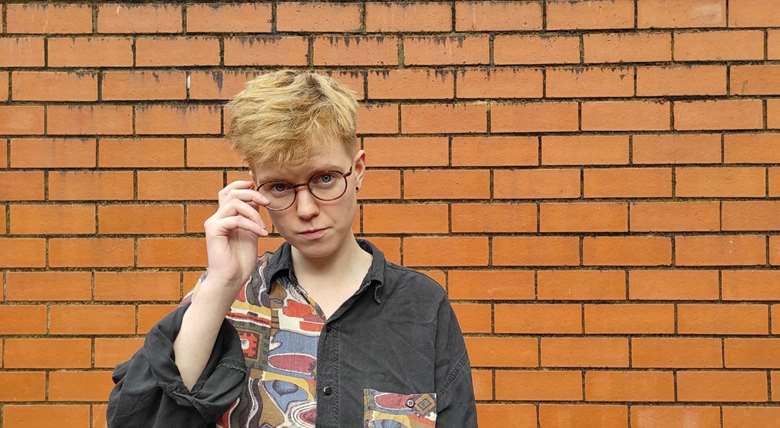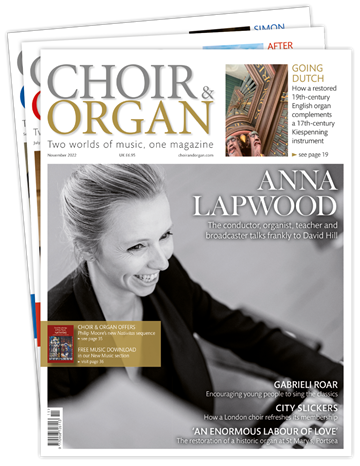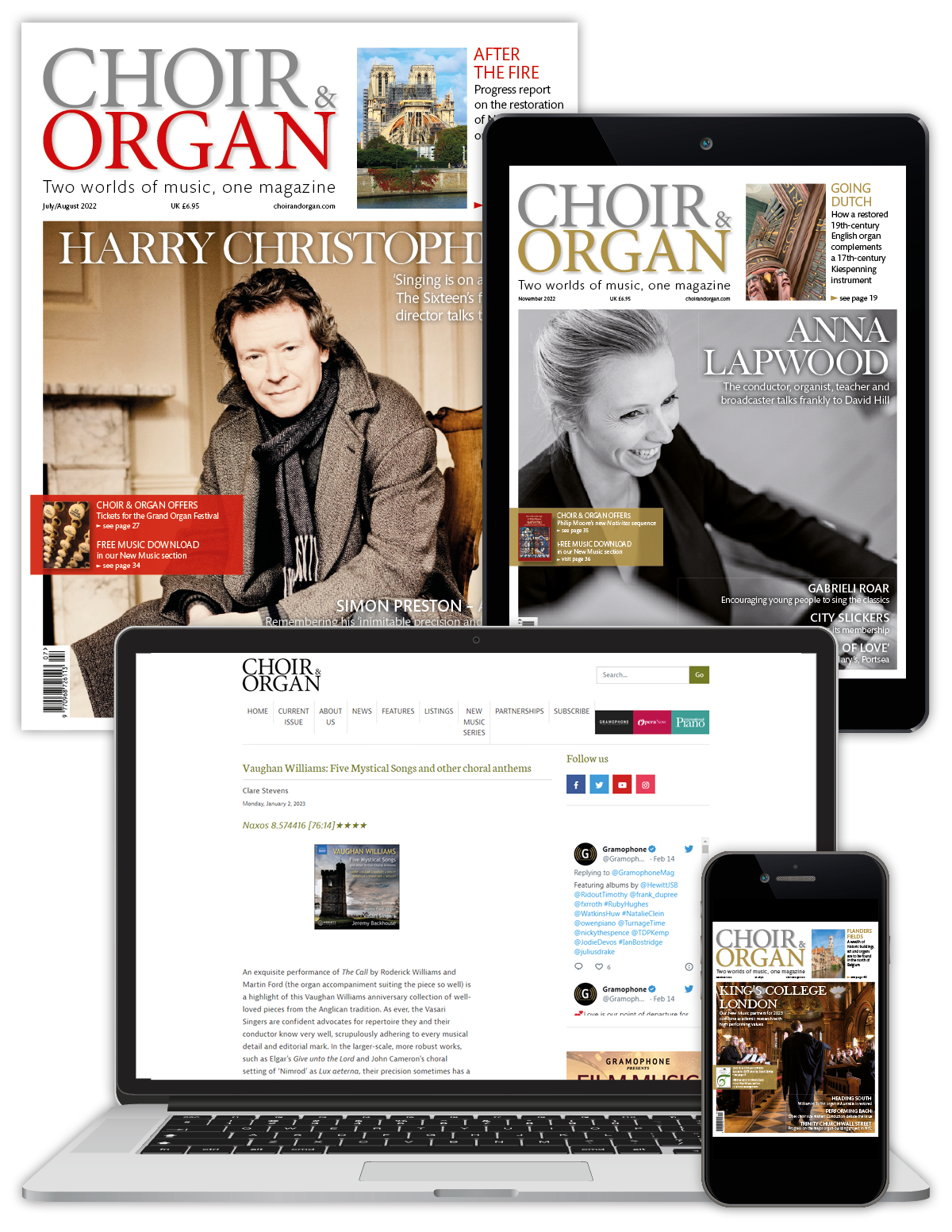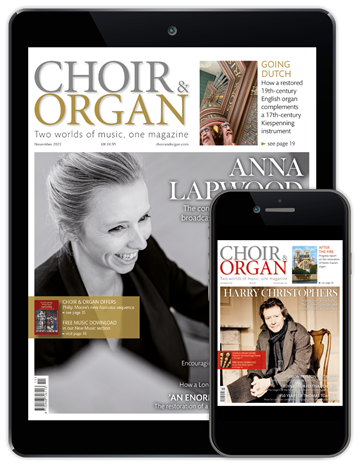Fraz Ireland - Glitterball for organ
Monday, February 26, 2024
Both innovative and idiomatic, this new organ piece explores the possibilities of registration and leaves organists to interpret its soundscape. Composer Fraz Ireland talks to Matthew Power

Credit: Amy Bryce
Exploring a ‘provocative and jovial relationship with your audience; lurking in the corridors between liminal spaces’ is how Fraz Ireland describes their work. Can we unpack those elements? Ireland recounts their studies at the Royal Northern College of Music (RNCM) alongside an undergraduate degree at the University of Manchester. ‘My dissertation was about the things around the outside of music. Not the sounds that we hear, but all the other bits… The title, the programme notes, the seats we sit on… I was arguing that those paratextual elements are at least as important as the sounds themselves. Alongside that, I couldn’t ignore the importance of the composer’s biography. Who hasn’t sat through a concert, been a bit bored by one of the pieces, and started reading the programme?’ Giving the audience things to do while listening (notes to read, web pages to click on) is Ireland’s means to consider the relationship between composer and performer in a provocative relationship with the audience. ‘But it’s not provocative in a way that is intended to shock or offend them; it’s more about having fun and welcoming them into the game, including them in the joke.’
A clarinettist to begin with, Ireland was first encouraged to explore their creativity on a residency at South West Music School, which welcomes talented musicians aged eight to 20 and serves a wide geographical area in the south-west of England. Ireland has returned there recently to be part of the team teaching composition for orchestra.
‘While I was studying there I had a mentor, Jon James. Aged about 13, my ambition was to learn every single instrument in the orchestra! Jon wisely advised that that was probably not the best use of my time and that, instead of learning to play them all, I should learn how to write for them.’ After some initial experiments, Ireland won a place for three years as a composer with the National Youth Orchestra (NYO). ‘That was one of the most important things in my early development; it gave me opportunities to meet other musicians and to write.’
How did composition develop at the RNCM? ‘There was a constant trajectory through those four years of [learning] things that would get passed on to the next piece and the next piece. I was taught by Emily Howard and then by Larry Goves; they offered their own perspectives on my work – I had completely different conversations about the same music with both of them.’ As part of a techniques module, Ireland created a piece that aimed to replicate the sound of a dishwasher: ‘I did some very deep spectral analysis for that! These were exercises, not concert pieces, and were fantastically useful opportunities to explore a wide variety of approaches and compositional styles.’
Ireland was a Britten-Pears Young Artist in 2020. ‘It was during lockdown, in the early days of being completely online, so it felt like a very unknown environment – quite a good place to start getting to know each other and experimenting with new ideas.’ They explored the use of video and how it works with performers and audiences, and their work was workshopped by resident ensemble The House of Bedlam (a collective of four musicians including Larry Goves).
The term ‘composer’ is too restrictive to describe Fraz Ireland. Their website has a whimsical, hand-made quality that reflects the playfulness of their work. We talk more about the specific inclusion of video alongside musical structures. ‘When I use video, it’s like another instrument rather than some extra entity.’
The Manchester-based contemporary ensemble Psappha, founded in 1991, was forced to close last November when all of its Arts Council funding was scrapped. That looks like a good book, what’s it called? for solo piano was composed as part of Psappha’s ‘composing for...’ scheme in 2021. While the pianist plays what might be called a stream-of-consciousness narrative, choosing their own path through a score containing graphics, notation, text and quotation from other music, the audience is invited (if they wish) to follow on-screen programme notes which provide an amusing and often distracting counterpoint. ‘Over several months I was able to work with Ben [pianist Benjamin Powell] and explore ways of creating this score. Ben gets to choose which bits he clicks on and goes on a kind of fantasy adventure.’
... and we would have taken the same route had it not been for the storm last night, for the Eskandari Quartet, was written in 2019 and premiered at Manchester Cathedral. There is an intense linear form to this as it grows out of notes sustained and altered through its duration, increasing in its scope of dynamic and tonal range before reverting to its origin. Ireland’s teacher Emily Howard suggested drawing the form of the piece to begin with, an approach also promoted by Anna Meredith at the NYO. Does Ireland see colours and textures, or just ways of visualising what is musical? ‘It’s not always as simple as how it would appear on a score. I think we often forget how metaphorically we talk about music. If you describe a pitch as high or low, that is a metaphor: it’s not actually high or low. You’re making an interpretation of how the wavelengths operate.’ These metaphors are so familiar to us that we forget that they are metaphors – I realise that is something I do all the time.
In 2021, Ireland was composer-in-residence for the Centre for Cultural Values Research Conference, producing an experimental and extended work in a video medium, 4th ought sing raved ink loud | for thoughts engraved in cloud, which contains, among other elements, audio snippets from audience members leaving after a performance. This palimpsest answer to music creation seems countercultural when viewed through the lens of traditional composition. How can all these elements combine to be less of a distraction from the music and more of an enhancement?
‘During the pandemic lockdowns I had really missed the feeling of leaving concerts and talking about the music, and particularly of hearing other people talking about it. I think that’s such a nice moment when you get tiny glimpses of other people’s thoughts and ideas. You can’t avoid the fact that any audience is going to have stuff going on in their own minds while they’re watching, while they’re listening. If you ignore that, you miss the opportunity to engage with it positively. The audience is the final instrument that we’re writing for… for their own private performance that they get inside their mind.’
Turning to Glitterball, Ireland’s New Music piece for organ: was this a first foray into writing for the instrument? ‘Yes – apart from choral accompaniments… It was great to speak to Nicholas [Morris], who sent me off with some things to listen to. He was really open to whatever I came up with. I knew from the start that I wanted to do something interesting for the feet hence these little canonical bits that pop up, and I wanted to somehow explore the possibilities of registration.’ The most unusual element is in the opening section; a separate stave depicting manipulation of the Pedal stops to create a soundscape. ‘It might look unfamiliar at first but it shows you what to do and when to do it, just as you would for any instrument. Pulling out stops rather than playing keys is just another way of writing for the hands. And I wanted to leave some freedom over the exact stops so that any organist with any instrument will be able to bring their own interpretation to it; not to micro-manage, but to trust the performer.’
The score for Glitterball, commissioned by Choir & Organ in partnership with The Marian Consort, was available to download and perform until 31 August 2024.






